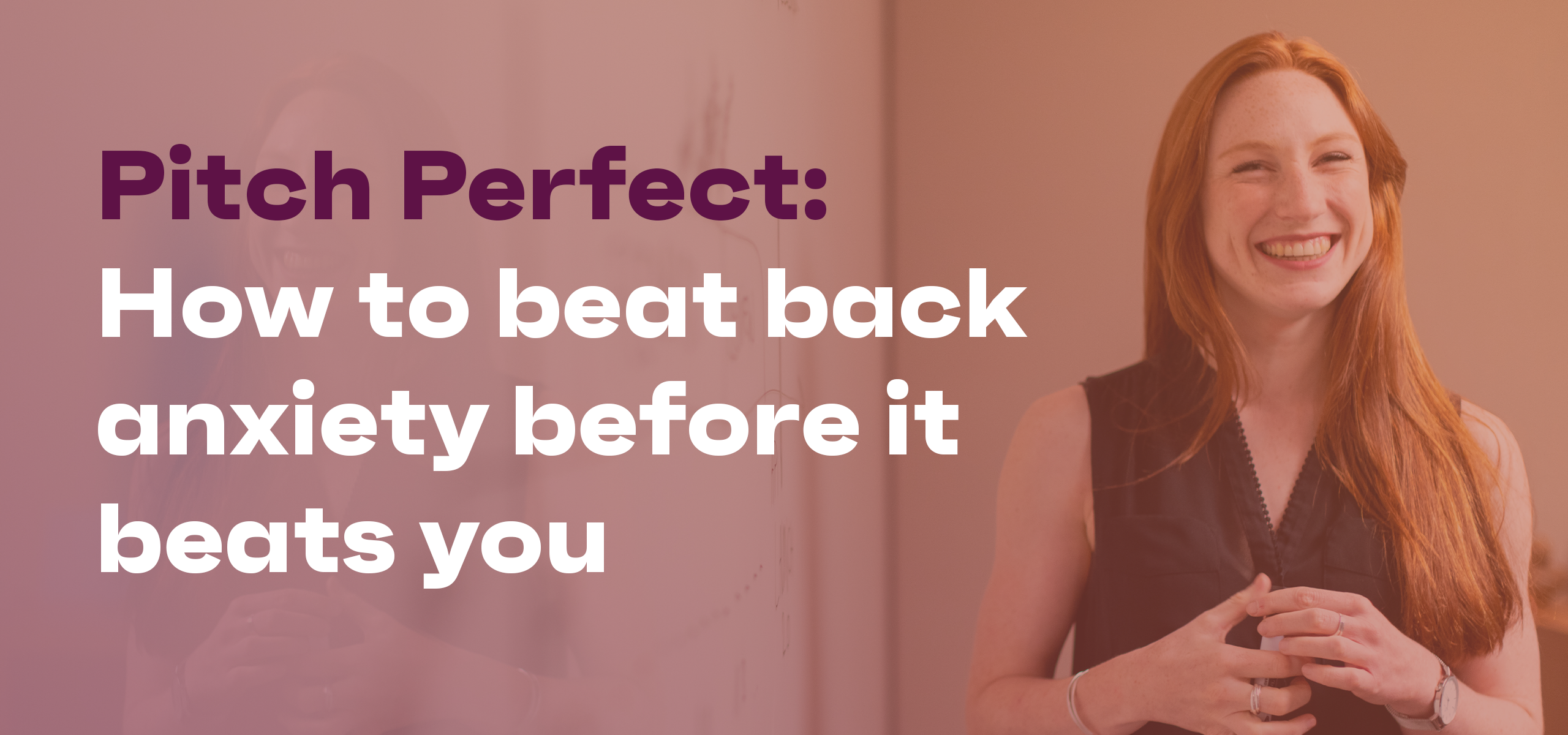
Pitch Perfect: How to beat back anxiety before it beats you
I remember the first time I experienced anxiety at work. I was so impressed by the people I was pitching to that I wanted to impress them in return.
I was so grateful for the opportunity to work on the project that I wanted to do it justice. I was so scared of being caught out as not good enough that I wanted to prove my ability to the world – and maybe even convince myself along the way.
The result was crippling. The pressure cooker that I had created out of these personal expectations meant that every night I was simmering in a stew of anxiety. I couldn’t sleep, I was catastrophising at every corner, and it got to the point where I was so anxious, I was vomiting before leaving the house every morning – something I had never experienced before. Furthermore, when it came to finally sitting in a room and pitching to these people I was so keen to impress, my mind was too preoccupied with unhelpful thoughts to be able to be present in the room. Basically, I felt like I was blowing it – further fuelling my negative self-talk.
This particular occasion has stuck with me long since. Thankfully not because I blew it, but because it was so bad that it shook me into action – I knew that I had to get a handle on it. If I wanted to keep working with people who impressed me and if I wanted to keep stretching myself, I had to learn to deal with the anxiety that would (likely) come with that – because throwing up on the reg’ was not something I was prepared to put up with.
So if you experience anxiety when pitching, know that you’re not alone. And whilst we can’t wait for anxiety to not be present (trust me, the days aren’t long enough), we can work on a few little tricks and habits to help us work alongside it.
1. Zip Your Lips and Listen
 One of the biggest reasons anxiety is bad for business? It turns you into a bad listener.
One of the biggest reasons anxiety is bad for business? It turns you into a bad listener.
I’ve been sitting opposite
a client and suddenly, my anxious brain has begun firing off instructions: “Prove to them that you know what you’re talking about! Don’t forget to tell them X! They think you’re terrible – keep talking so they don’t have a chance to ask you to leave!”
The result? I’m listening to myself instead of the client. Or worse: my anxious motormouth is off and running, leaving behind any opportunity to hear my client’s needs. I’ve jumped the gun, looking to prove I’ve got the answers and thus missing the most important steps along the way.
Anxiety circumvents natural inquisition and the steps towards understanding someone’s predicament. So you need to practice being present and trust that if you commit to this process, you will be able to understand your client and respond accordingly. Alison Armstrong has some great tools for active listening. And whilst her tools are specifically directed to listening to men, I found them extremely useful for listening to others more generally. My fave? Ask a question, then sit on your hands and zip your lips for 30 seconds – at least. Pass the mic and let those onion layers unfurl, sans tears.
2. Work off a framework,
not a script

Anxiety tells you to have a script – “if I have a script and stick to it, nothing can go wrong.” (Cue the alarm bells). But for now, at least, we’re working with humans and not robots, which means any fully-scripted pitch won’t ever go exactly as planned. It’s going to be fluid, so your job is to create a framework that allows it to be.
I like to think of pitching like taking a client on a tour of a (recently renovated) house. Of course you want to show them the foyer, living room, kitchen, all three bedrooms and the bathroom. Of course you want to tell them about the antique architraves you’ve repurposed in the main bedroom and the sustainable heating solutions you’ve carefully considered for the living room. Alas, the chances are you’ll head into the living room and all they’ll want to talk about is the ‘Scotland Road’ shade of white paint on the walls, meaning there is no chance of getting through all the rooms of your house. But that’s okay – if you’ve listened carefully (see point 1) and aren’t shackled to your script, you will hear what’s most important to your client and be comfortable sitting in that space for as long as necessary.
3. Be aware of your thoughts

I’ll say it: imposter syndrome is a monster. And in my case, anxiety’s best monster friend, working hand-in-hand to make things difficult.
Around the time when imposter syndrome was most prevalent in my career, I began to learn about NLP (Neuro-Linguistic Programming). The key to NLP is that nothing is good or bad, it just ‘is’, and you cannot control what others think or do. It’s about resetting the wires that tell us we’re not good enough and teaches us that by observing our mental dialogue rather than acting on it, we change our relationship to it.
So, whilst imposter syndrome may continue to rear its ugly head, whispering not-so-sweet nothings into your ear, practice awareness over action. Turn to the little devil on your shoulder, acknowledge what it is saying, and rather than letting these negative thoughts control your actions, practice saying, “Those are interesting thoughts. And whilst there’s a chance they might all be true, I’m going to do it anyway.”
If that doesn’t work, take my Mum’s words with you into the room:
“Who cares what they think? They’re just another bag of bones.”
4. The Houseplant Treatment: breathing, feeding, watering

Tip number four is last but far from least, as it will vastly help you with tips one through to three.
I have family members who are deep into meditation, so it is something that I have always been aware of but not something I had ever really considered as useful (or indeed necessary). But one day, when simple deep breathing wasn’t cutting it, I downloaded the SmilingMind app and did one of their 10-minute meditations to help me sleep. Then, the next morning before meeting a client, I sat in the car and did a different 10-minute meditation. And the next day, another. And another. Not only were they helping me to control my anxiety in the short-term, but they became part of a routine which would help me to manage my anxiety in the long-term.
The other part of this routine was ensuring I was eating and drinking properly. Eating regular meals and drinking plenty of water is important when negotiating anxiety. I found that when I was anxious, I would stop prioritising food and water – mostly because my constant state of flight-mode meant I had no appetite to act as a friendly reminder to do so. As a result, I became more anxious – a not-so-fun cycle to be stuck in. So, I set aside time to prepare quick and healthy meals for the week, and was pretty strict with myself on making sure I ate them – even when I wasn’t hungry. This is a big one particularly now, as we re-enter the world post-lockdown and lose the proximity to our kitchen.
Good food, good hydration and a calm mind (aka three of the wellbeing basics) will help you to actively listen, break free of a script, and navigate your thoughts more clearly.
—
